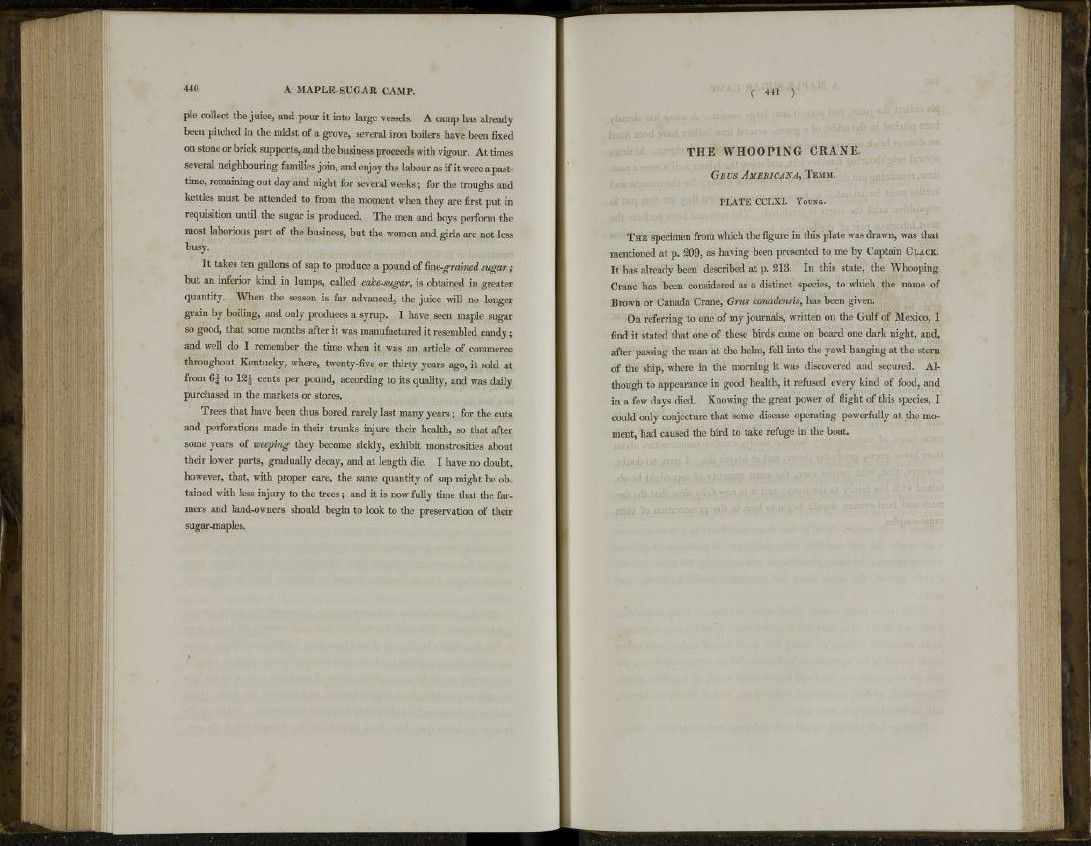
440 A MAPLE-SUGAR CAMP.
pie collect the juice, and pour it into large vessels. A camp has already
been pitched in the midst of a grove, several iron boilers have been fixed
on stone or brick supports, and the business proceeds with vigour. At times
several neighbouring families join, and enjoy the labour as if it were a pasttime,
remaining out day and night for several weeks; for the troughs and
kettles must be attended to from the moment when they are first put in
requisition until the sugar is produced. The men and boys perform the
most laborious part of the business, but the women and girls are not less
busy.
It takes ten gallons of sap to produce a pound of fine-grained sugar;
but an inferior kind in lumps, called cake-sugar, is obtained in greater
quantity. When the season is far advanced, the juice will no longer
grain by boiling, and only produces a syrup. I have seen maple sugar
so good, that some months after it was manufactured it resembled candy;
and well do I remember the time when it was an article of commerce
throughout Kentucky, where, twenty-five or thirty years ago, it sold at
from 6 £ to 1 2 | cents per pound, according to its quality, and was daily
purchased in the markets or stores.
Trees that have been thus bored rarely last many years ; for the cuts
and perforations made in their trunks injure their health, so that after
some years of weeping they become sickly, exhibit monstrosities about
their lower parts, gradually decay, and at length die. I have no doubt,
however, that, with proper care, the same quantity of sap might be obtained
with less injury to the trees; and it is now fully time that the farmers
and land-owners should begin to look to the preservation of their
sugar-maples.
( 4 4 1 )
THE WHOOPING CRANE.
Gnus AMERICANA, TEMM.
PLATE CCLXI. YOUNG.
T H E specimen from which the figure in this plate was drawn, was that
mentioned at p. 209, as having been presented to me by Captain CLACK.
It has already been described at p. 2 1 3 . In this state, the Whooping
Crane has been considered as a distinct species, to which the name of
Brown or Canada Crane, Grus canadensis, has been given.
On referring to one of my journals, written on the Gulf of Mexico, I
find it stated that one of these birds came on board one dark night, and,
after passing the man at the helm, fell into the yawl hanging at the stern
of the ship, where in the morning it was discovered and secured. Although
to appearance in good health, it refused every kind of food, and
in a few days died. Knowing the great power of flight of this species, I
could only conjecture that some disease operating powerfully at the moment,
had caused the bird to take refuge in the boat.